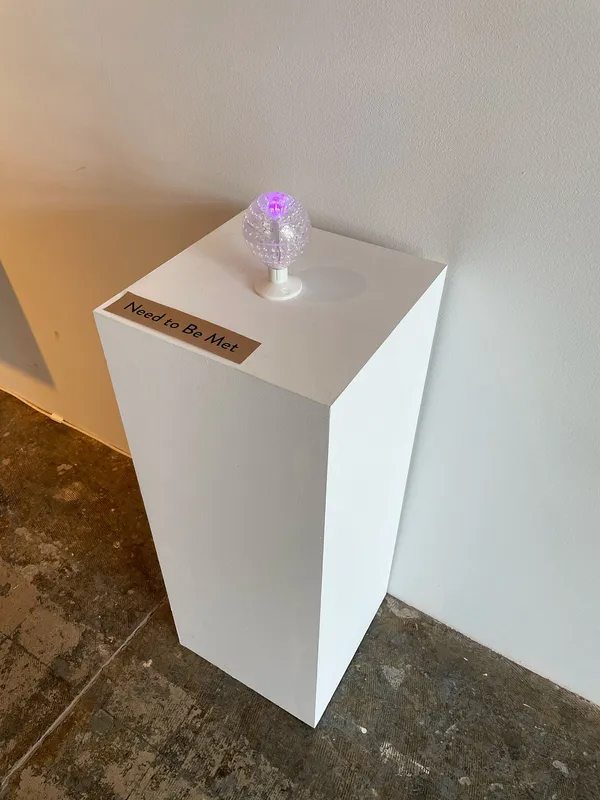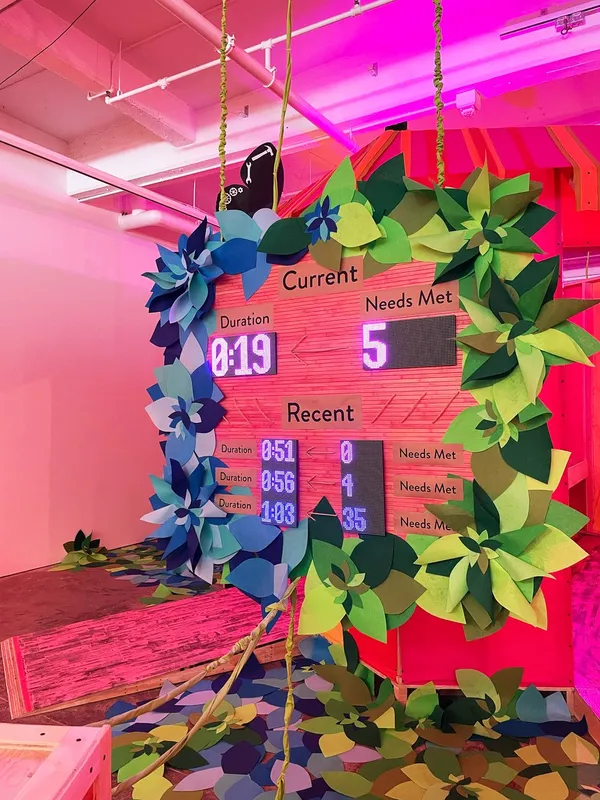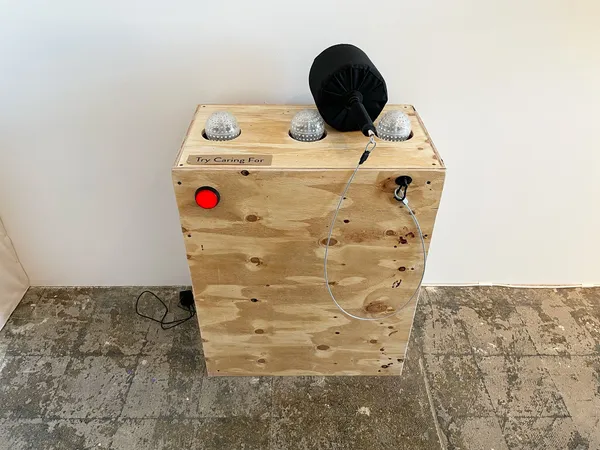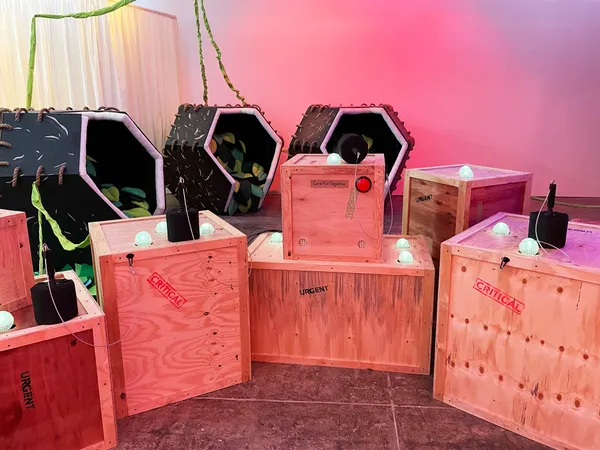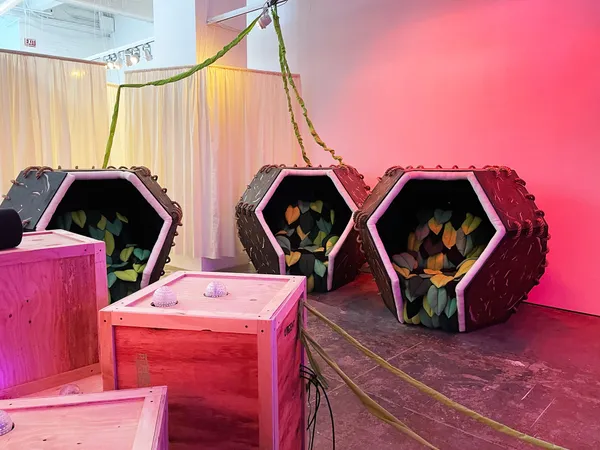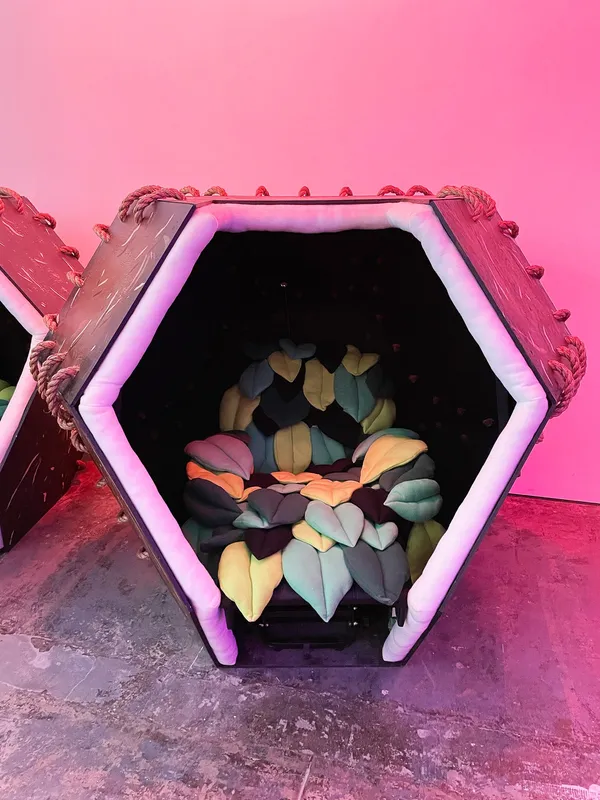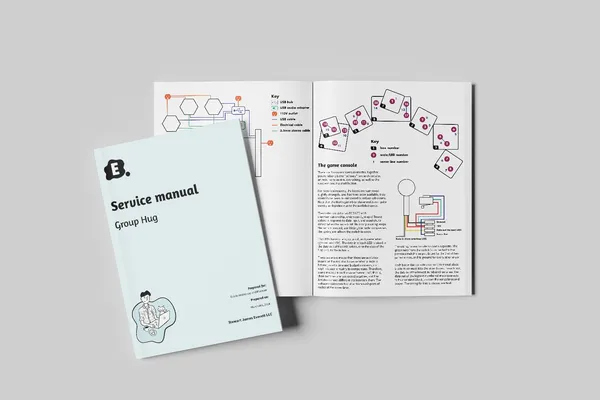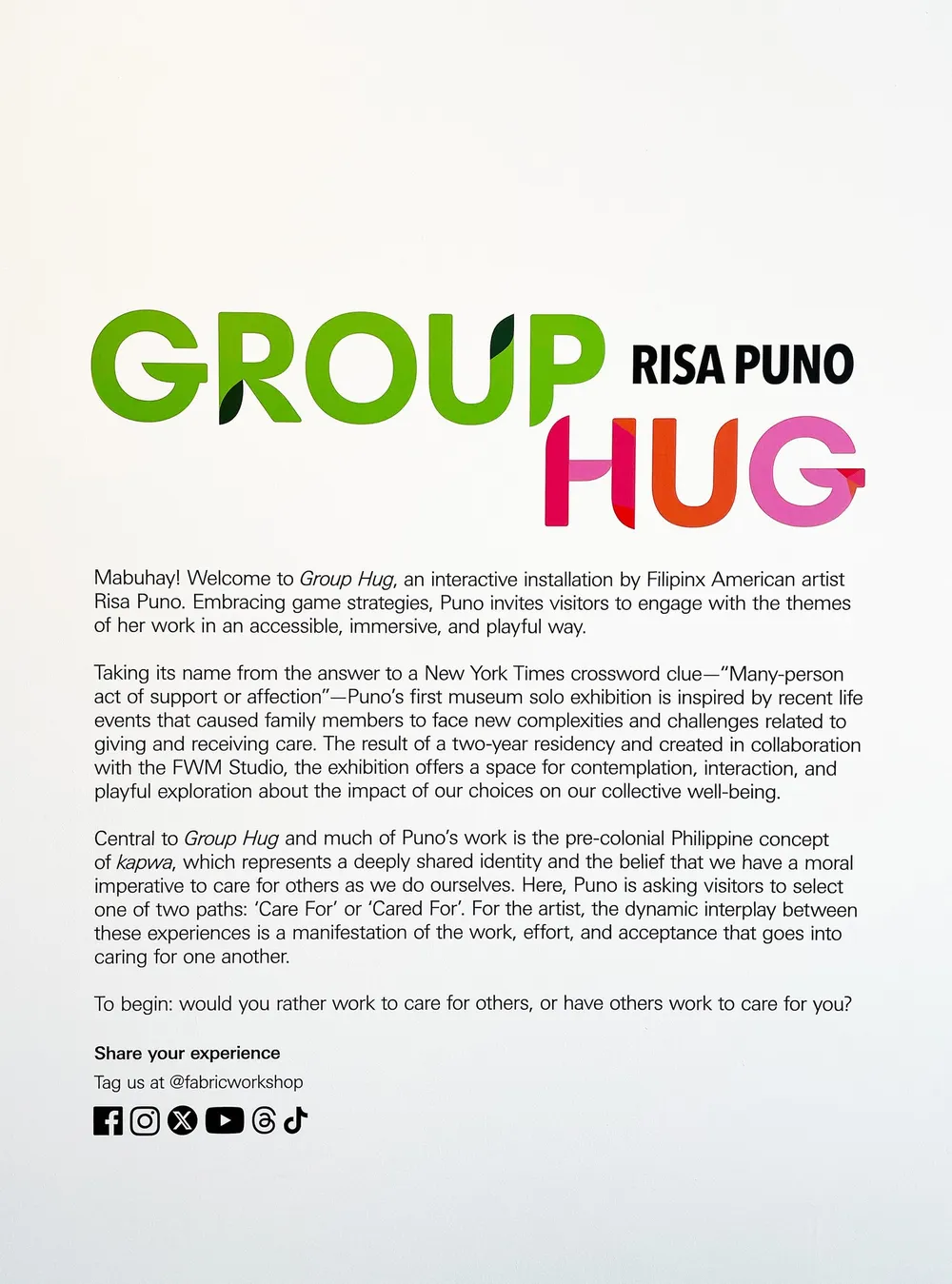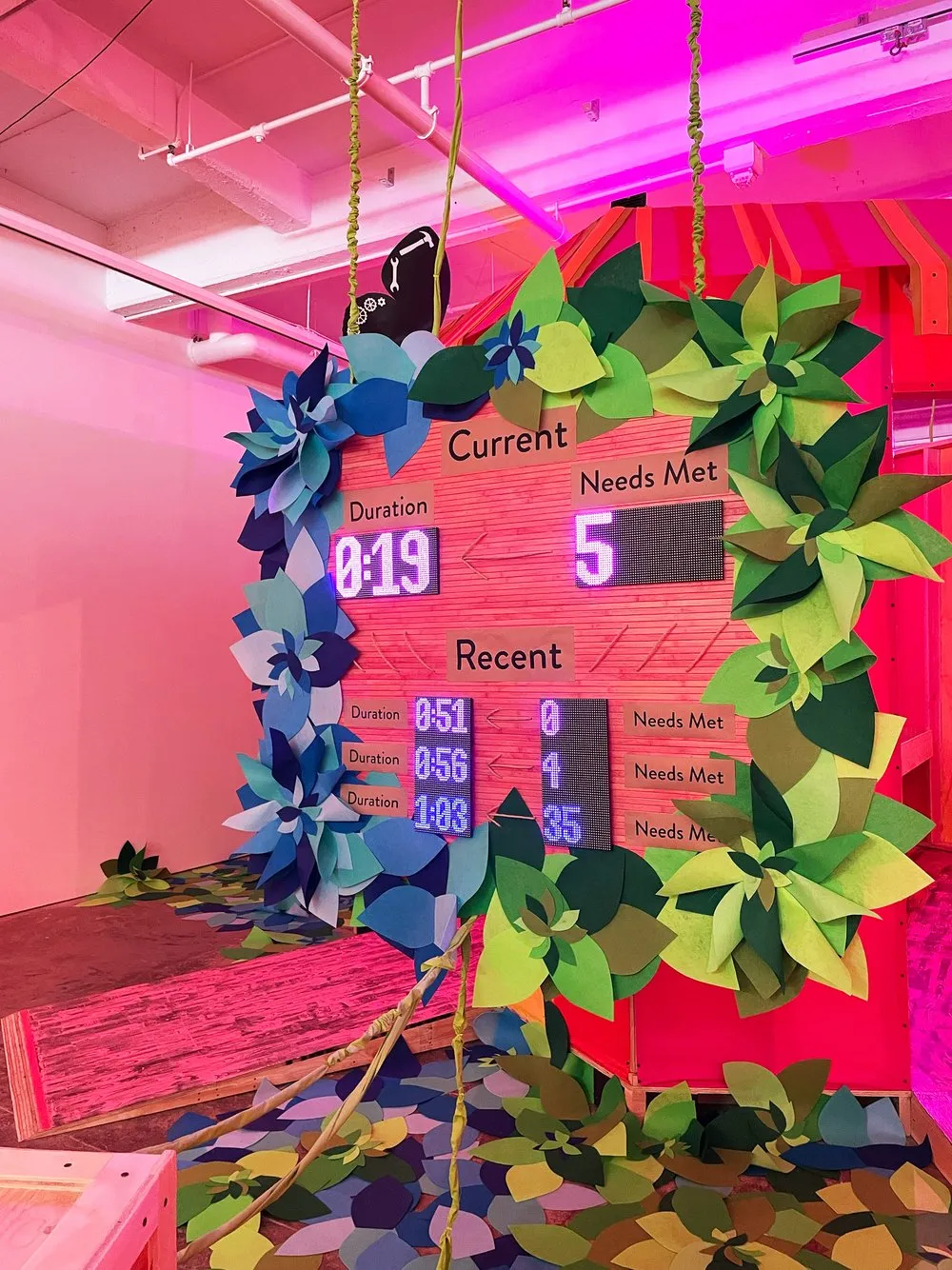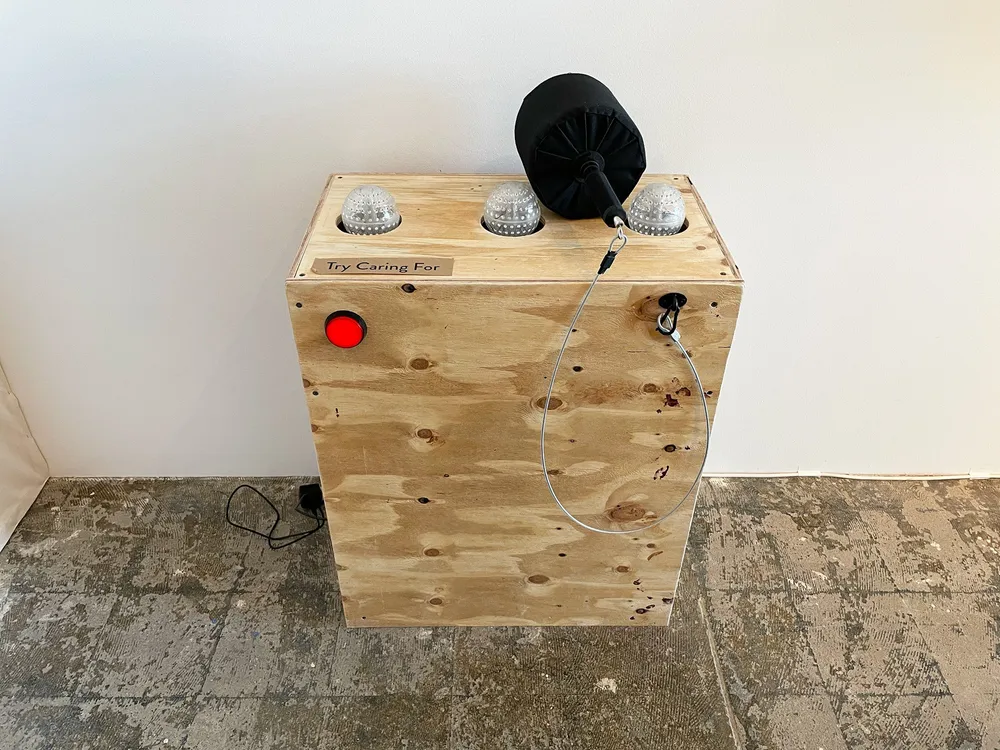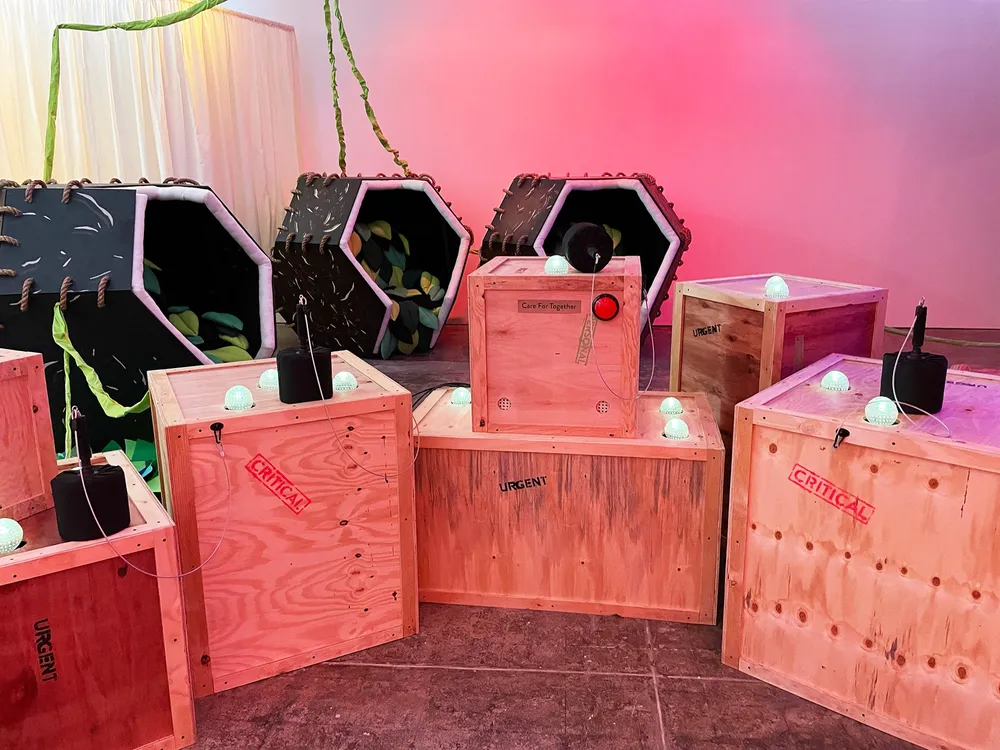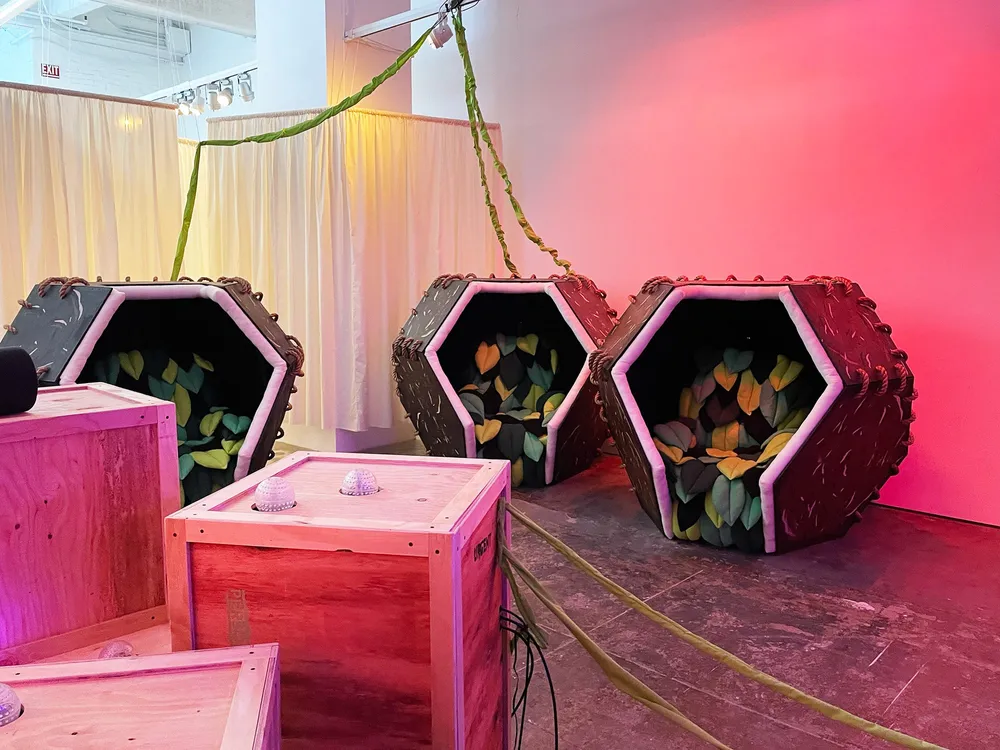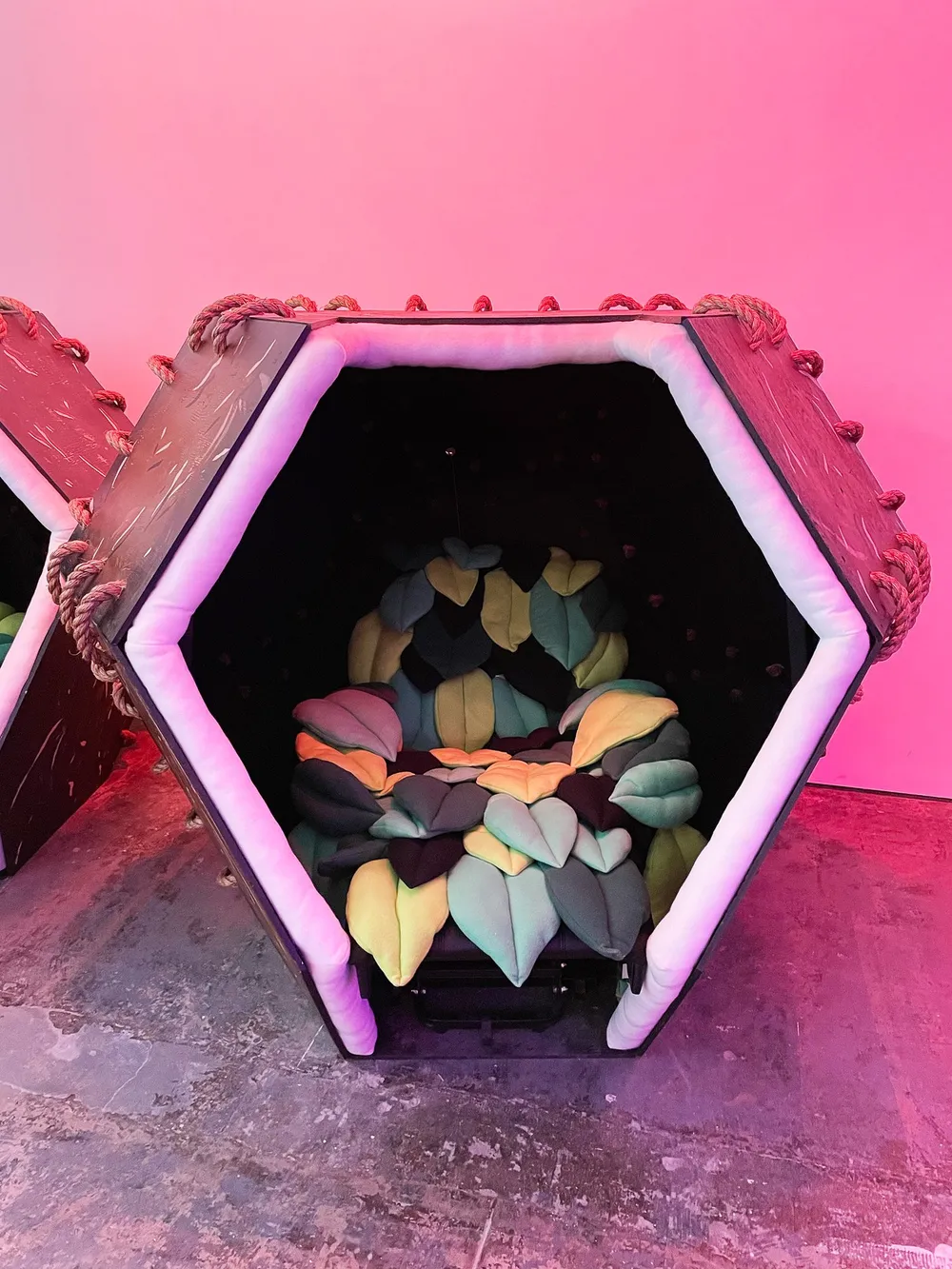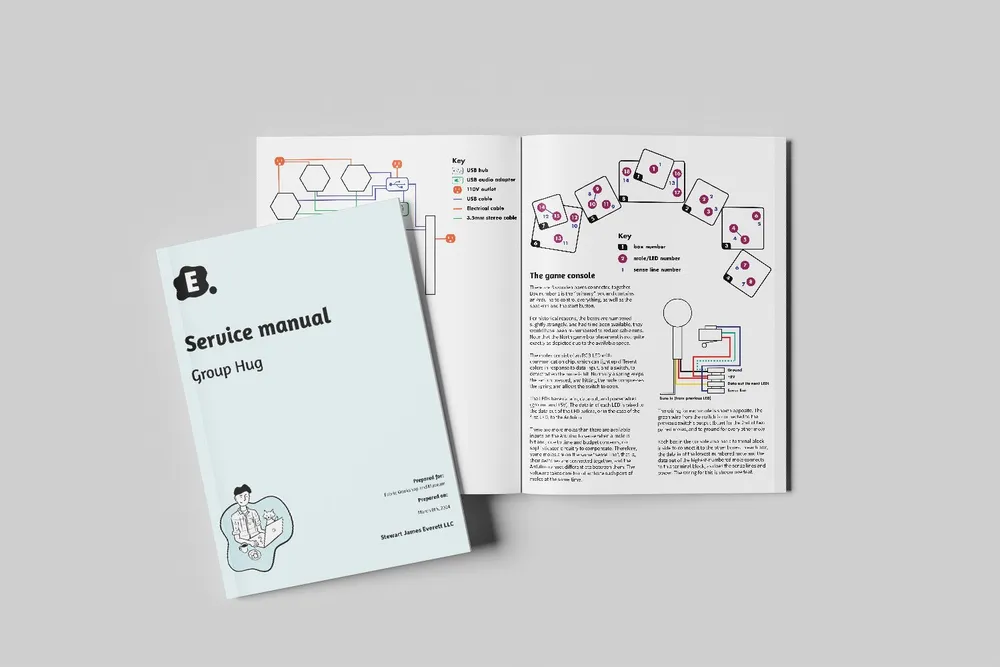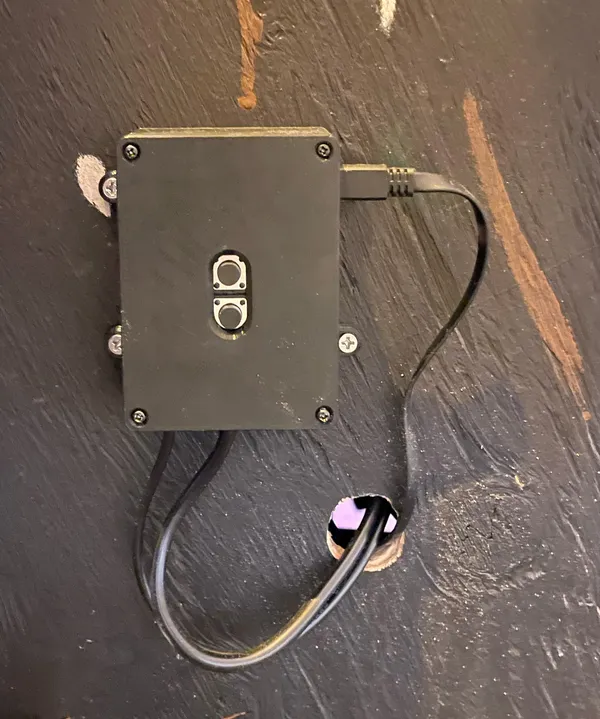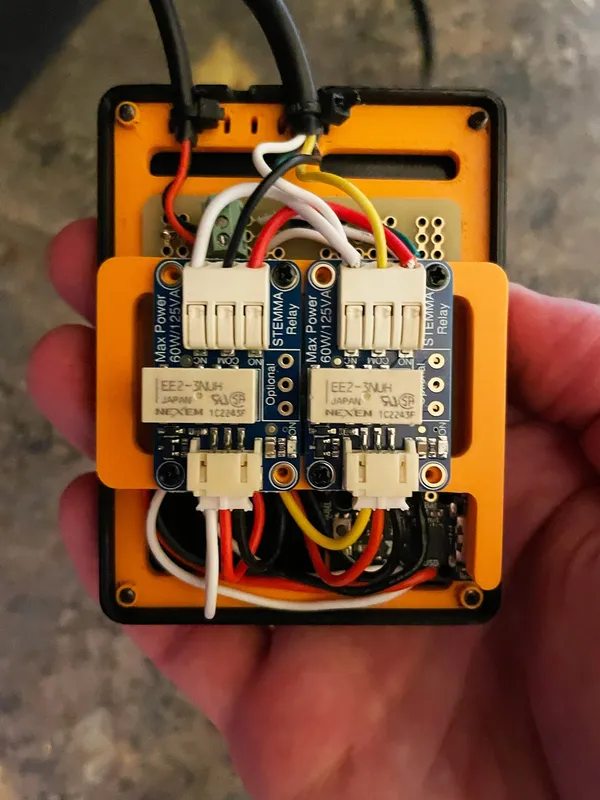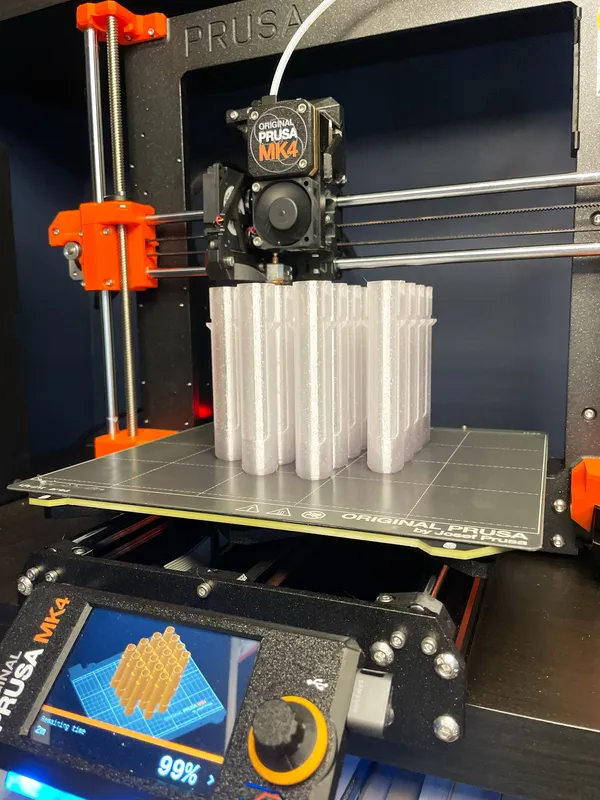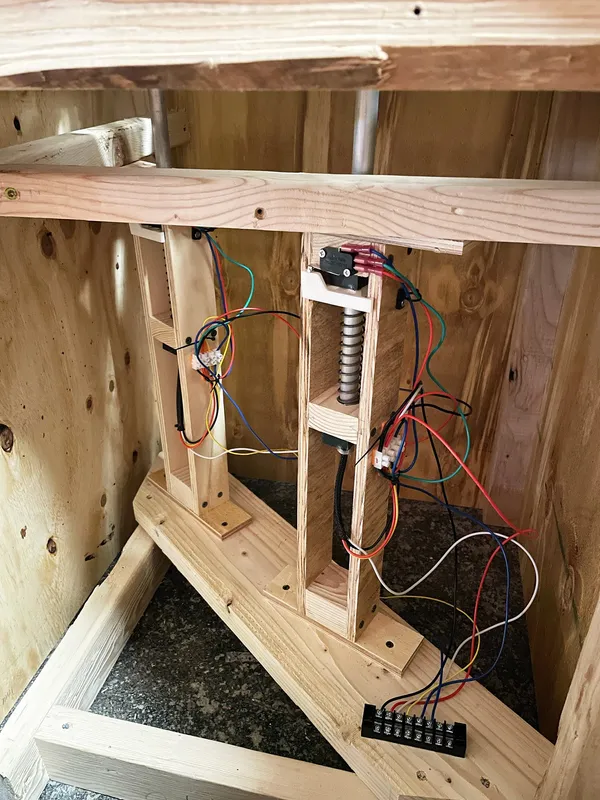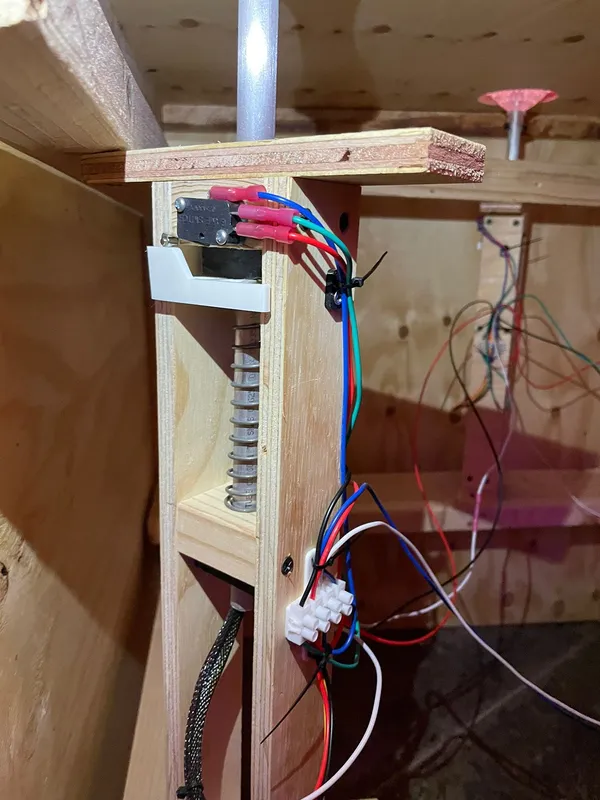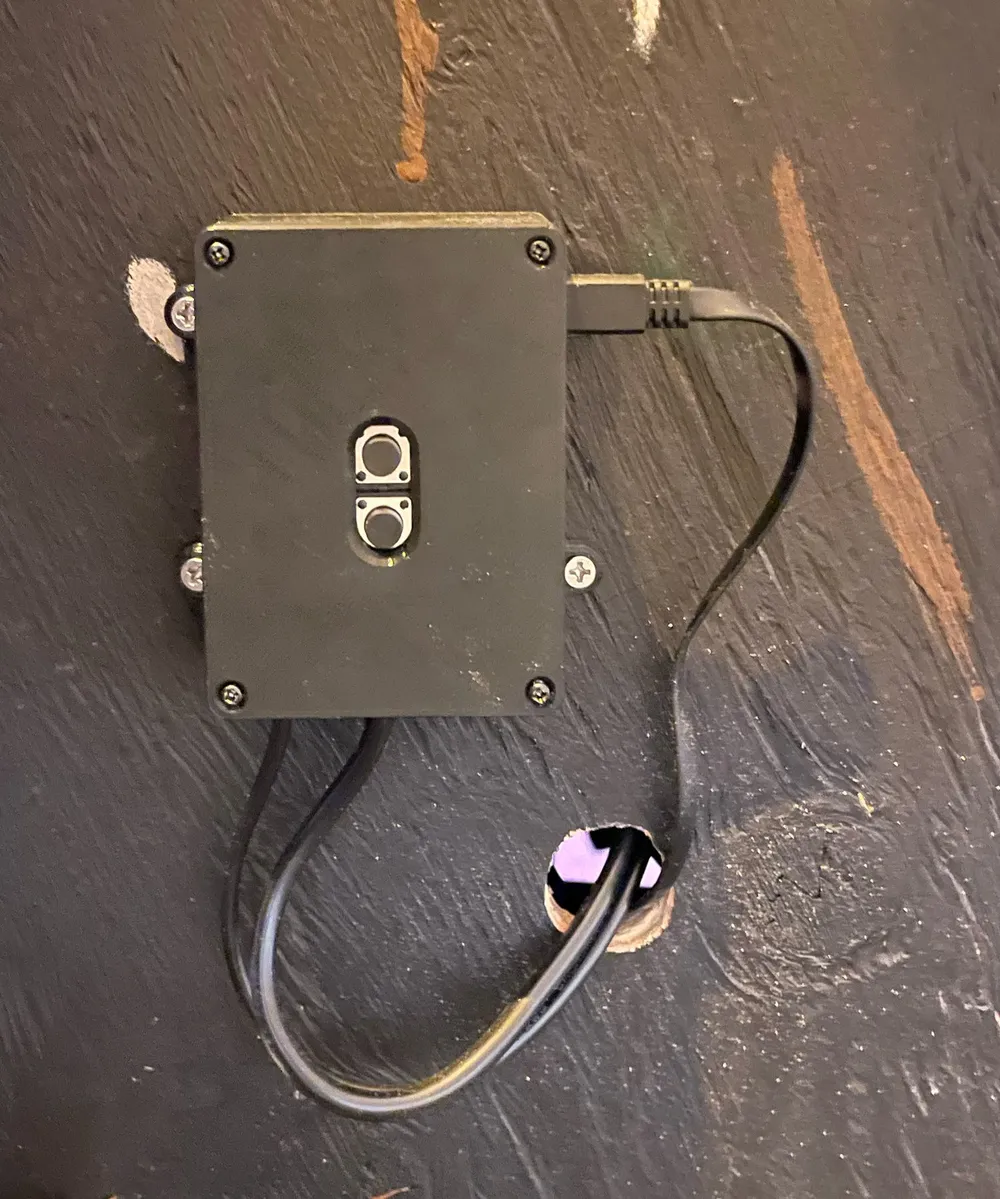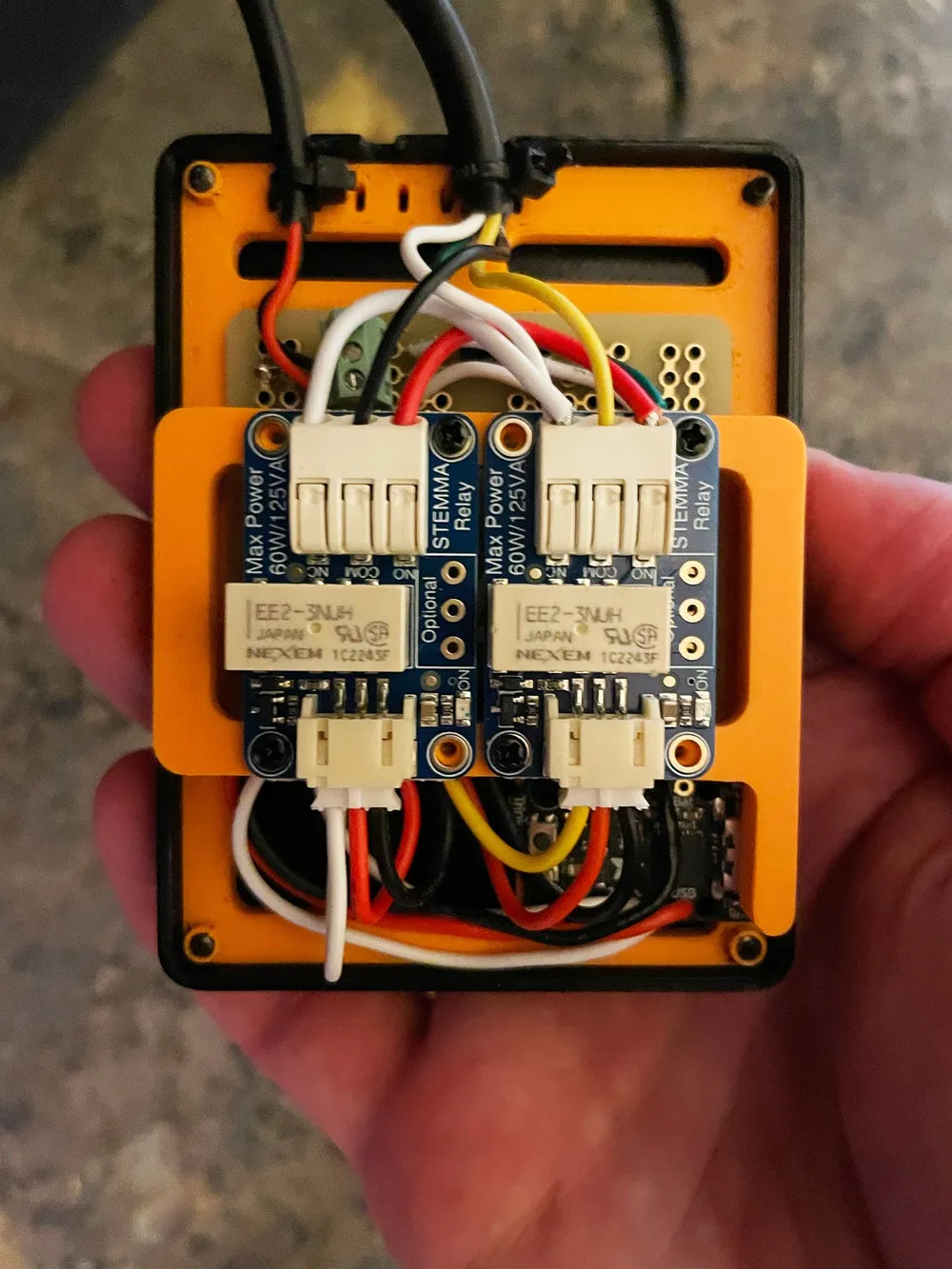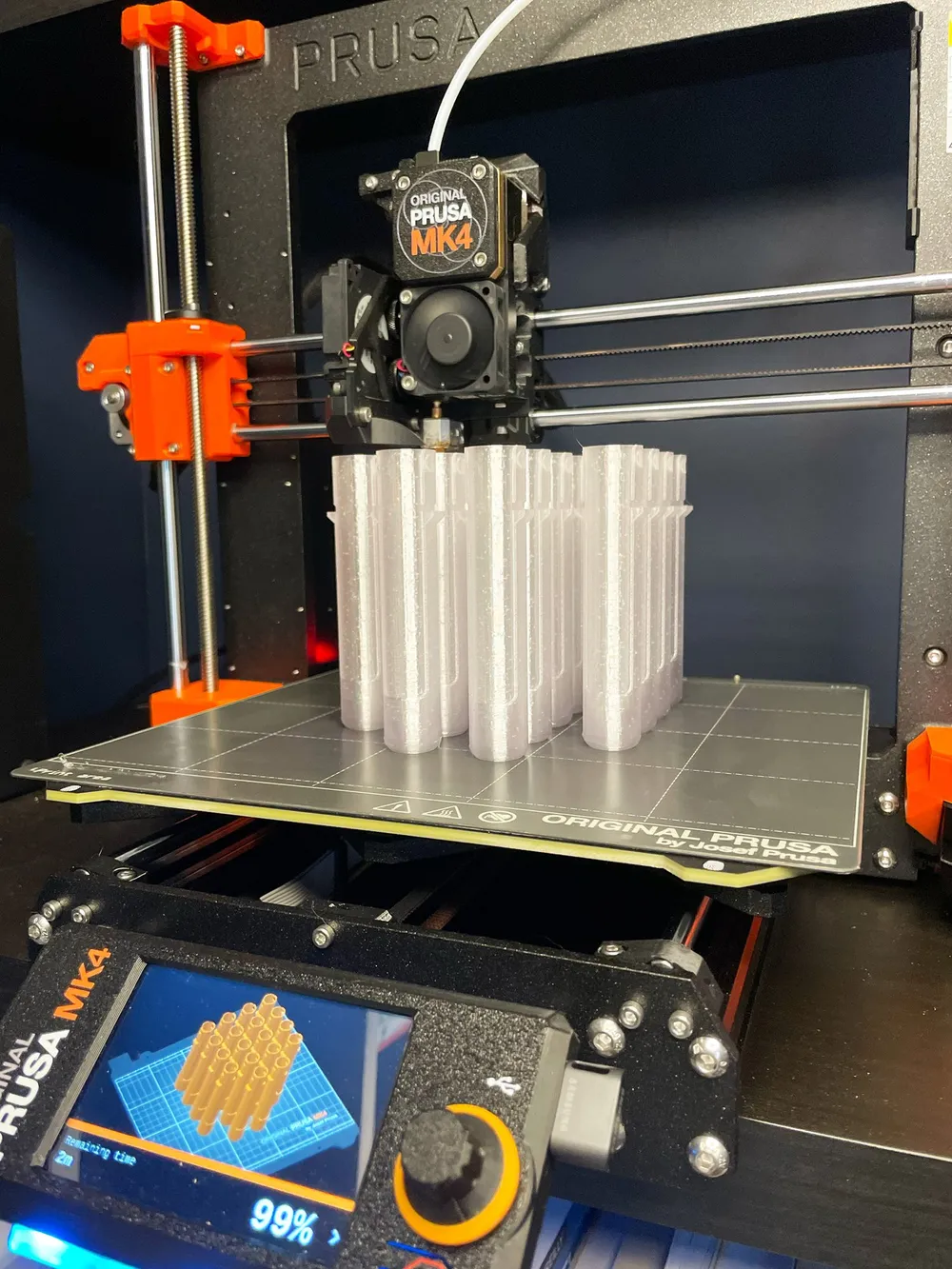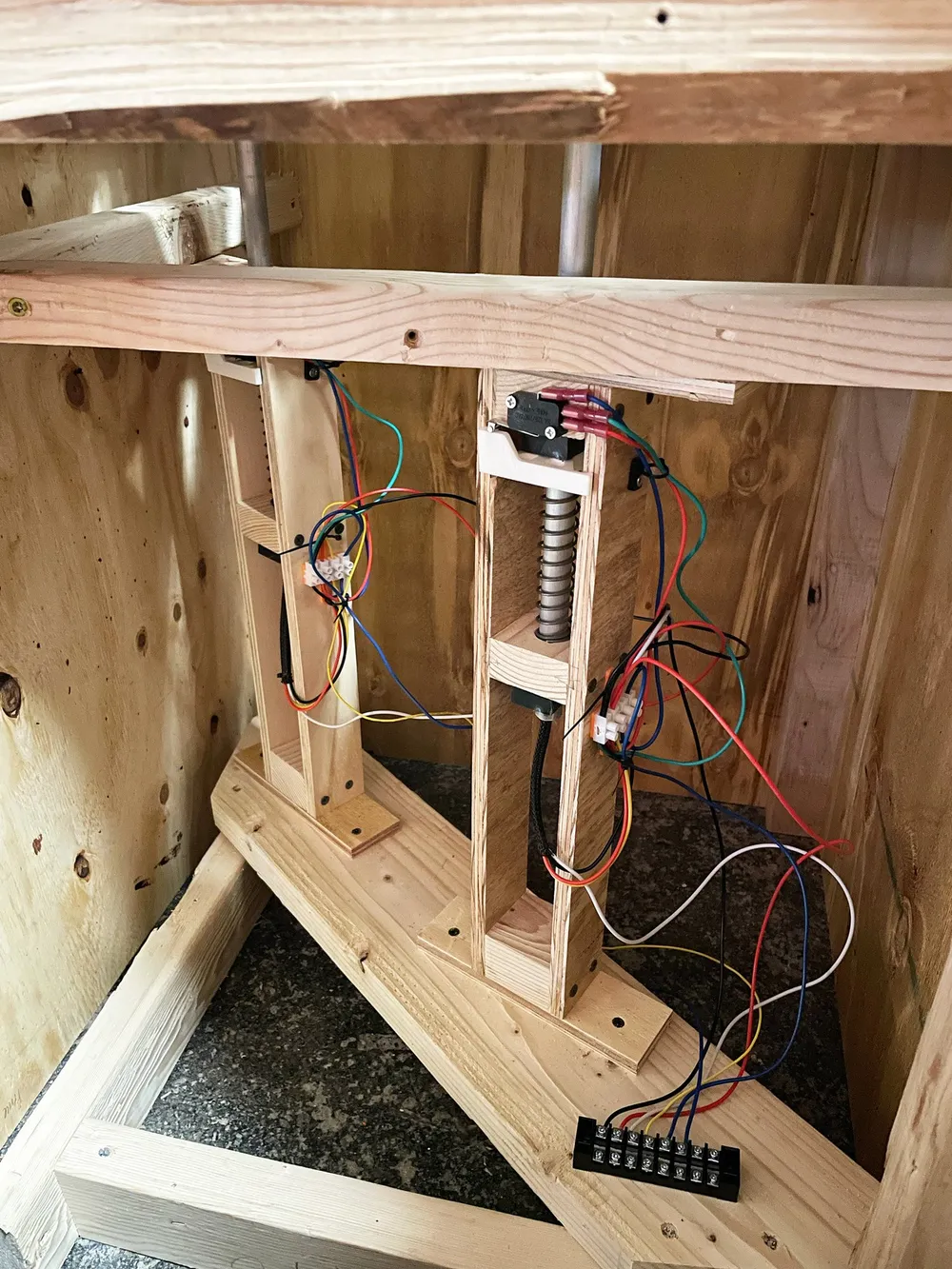Group Hug
Artist Risa Puno was inspired by events in her own life to examine the relationship of carers and the people they care for.
This exhibition at The Fabric Workshop and Museum in Philadelphia first prompts the visitor to choose whether to care or be cared for. The carers find go through a more typical-looking “museum” intro to the game, before finding themselves in a giant colorful game world where they have to meet the “needs” of the people they are caring for by hitting light up balls with a soft mallet.
Those choosing to be cared for go through a fabric maze, and are then invited to sit in luxurious recliner pods resembling geometric coconuts. The more “needs” the carers meet, the longer the people being cared for get to relax before the recliners return to an upright standing position.
The guests then move through to the center of the exhibition, a large traditional Pilipino structure called a Bahay Kubo, and then find themselves in a mirror image repeat of the game. Those who chose to care for are invited to be cared for, and those who just relaxed can step up and care for the others.
Inside the pods, the artist’s voice invites the person being cared for to relax — the sound of waves breaking onto the shore begin, creating a profoundly relaxing experience.
“This New Art Exhibit Is Low-Key the Best Free Self-Care in Philly Right Now”
— Laura Swartz, Philadelphia Magazine
My contribution was the design and implementation of the electronics, software, mechanisms, and 3D printed parts. There is a great deal of carpentry, sewing, painting, lighting and other design throughout the whole exhibit, which was brought to life by the Fabric Workshop staff and other contractors.
The gallery is repeated in mirror image on both sides, with each side consisting of a standalone “need to be met”, a trial game with 3 “needs”, and then the main game with 18 “needs” across 8 boxes. The “needs” are basically RGB LEDs inside a clear ball with some 3D printed brackets. These are on a sprung pole with a roller switch to detect hits.
The 3 need demo unit and the 18 need full game are controlled by an Arduino-like microcontroller each (the Metro from Adafruit), and connected via USB to the scoreboard — consisting of four 64x32 LED matrices controlled by a Raspberry Pi — which in turn connects to 3 more Arduino-like microcontrollers (this time the Trinket M0 by Adafruit), which control each of the seats. The seats are stand-assist recliners decked out in plush felt leaf-shaped pillows.
The sound for the game is provided by a sound FX board from Adafruit, and the sound inside the pods is played from the Raspberry Pi.
There is also a Trinket in each standalone “need to be met” at the beginning of each side of the exhibition. If you’re counting, that makes a total of 44 RGB LEDs, 14 microcontrollers, and 8 LED matrices!
The game software on the Raspberry Pi is written in TypeScript, and the microcontroller firmware is written in C++.
Other custom-designed 3D printed parts include components of the sprung mole mechanism, wire clamps, brackets, and cases for the electronics.

